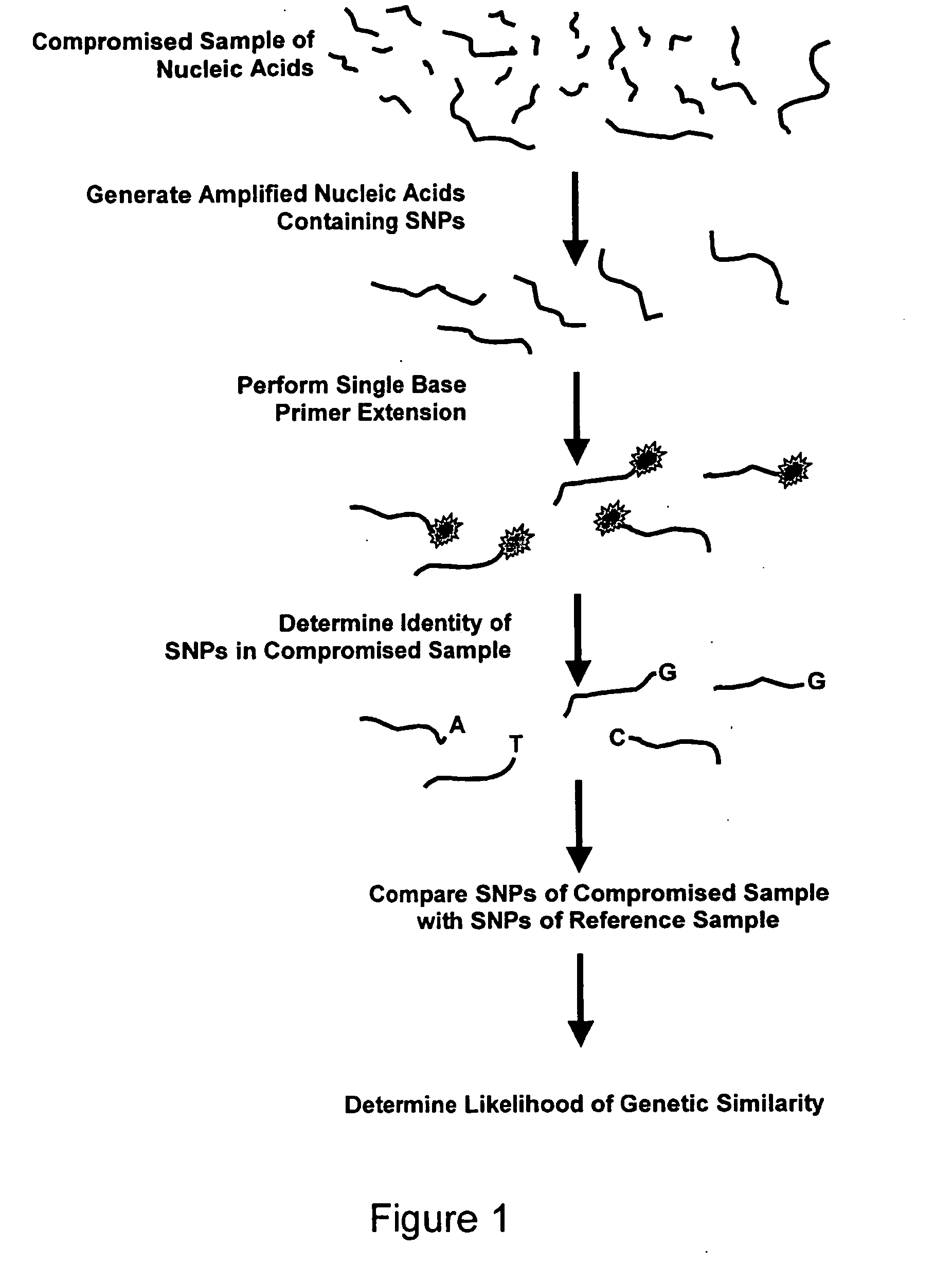Methods and compositions for analyzing comprised sample using single nucleotide polymorphism panels
a polymorphism and panel technology, applied in the direction of microbiological testing/measurement, biochemistry apparatus and processes, etc., can solve the problems of inability to solve fragments that are either too small or only very slightly in size, and the resolvability of sizing-based protocols is inherently limited by the resolving power,
- Summary
- Abstract
- Description
- Claims
- Application Information
AI Technical Summary
Benefits of technology
Problems solved by technology
Method used
Image
Examples
examples
Amplification
[0081] For a selected panel, amplicons comprising single nucleotide polymorphisms of the panel are prepared from compromised samples by the polymerase chain reaction (PCR) using a DNA polymerase, Amplitaq Gold™ polymerase, that is thermostable, a DNA template, nucleotides, and two specific primers per amplicon so that both DNA strands of fragments in the compromised sample are copied. A multiplex of these primer pairs is generated to allow the amplification of twelve amplicons in one reaction by combining equimolar amounts (10 μM) of each of the twenty four primers. The DNA is amplified by using a three step procedure: Step one: DNA denaturation (94° C.-100° C.) to generate a single stranded template; Step two: annealing of the primers (45° C.-65° C.) using hybridization conditions that guarantee that the primers will bind perfectly matched target sequences; and Step three: extension or DNA synthesis (72° C.). Usually 30-40 cycles of amplification are carried out to y...
PUM
| Property | Measurement | Unit |
|---|---|---|
| Volume | aaaaa | aaaaa |
| Volume | aaaaa | aaaaa |
| Volume | aaaaa | aaaaa |
Abstract
Description
Claims
Application Information
 Login to View More
Login to View More - R&D
- Intellectual Property
- Life Sciences
- Materials
- Tech Scout
- Unparalleled Data Quality
- Higher Quality Content
- 60% Fewer Hallucinations
Browse by: Latest US Patents, China's latest patents, Technical Efficacy Thesaurus, Application Domain, Technology Topic, Popular Technical Reports.
© 2025 PatSnap. All rights reserved.Legal|Privacy policy|Modern Slavery Act Transparency Statement|Sitemap|About US| Contact US: help@patsnap.com

